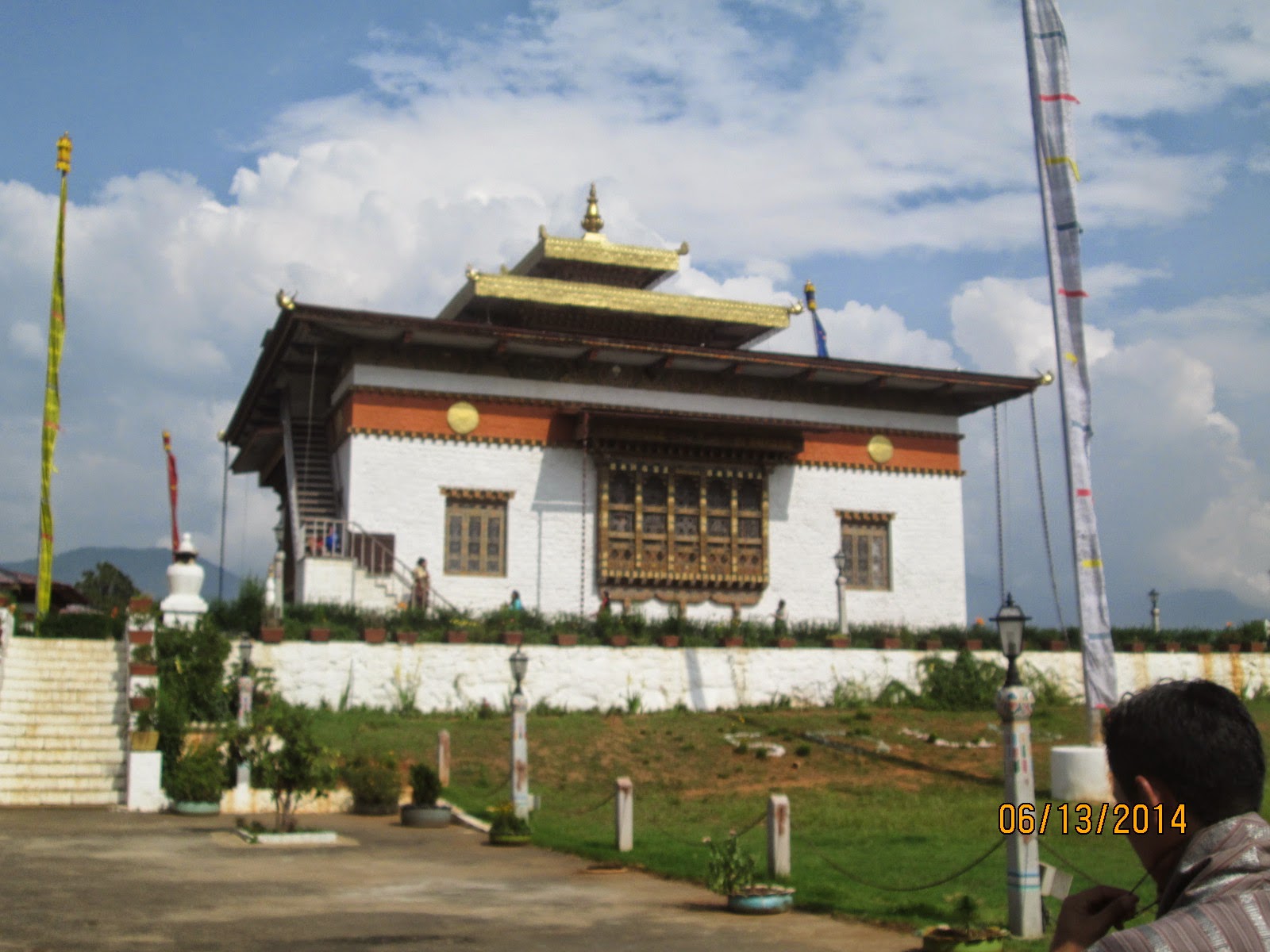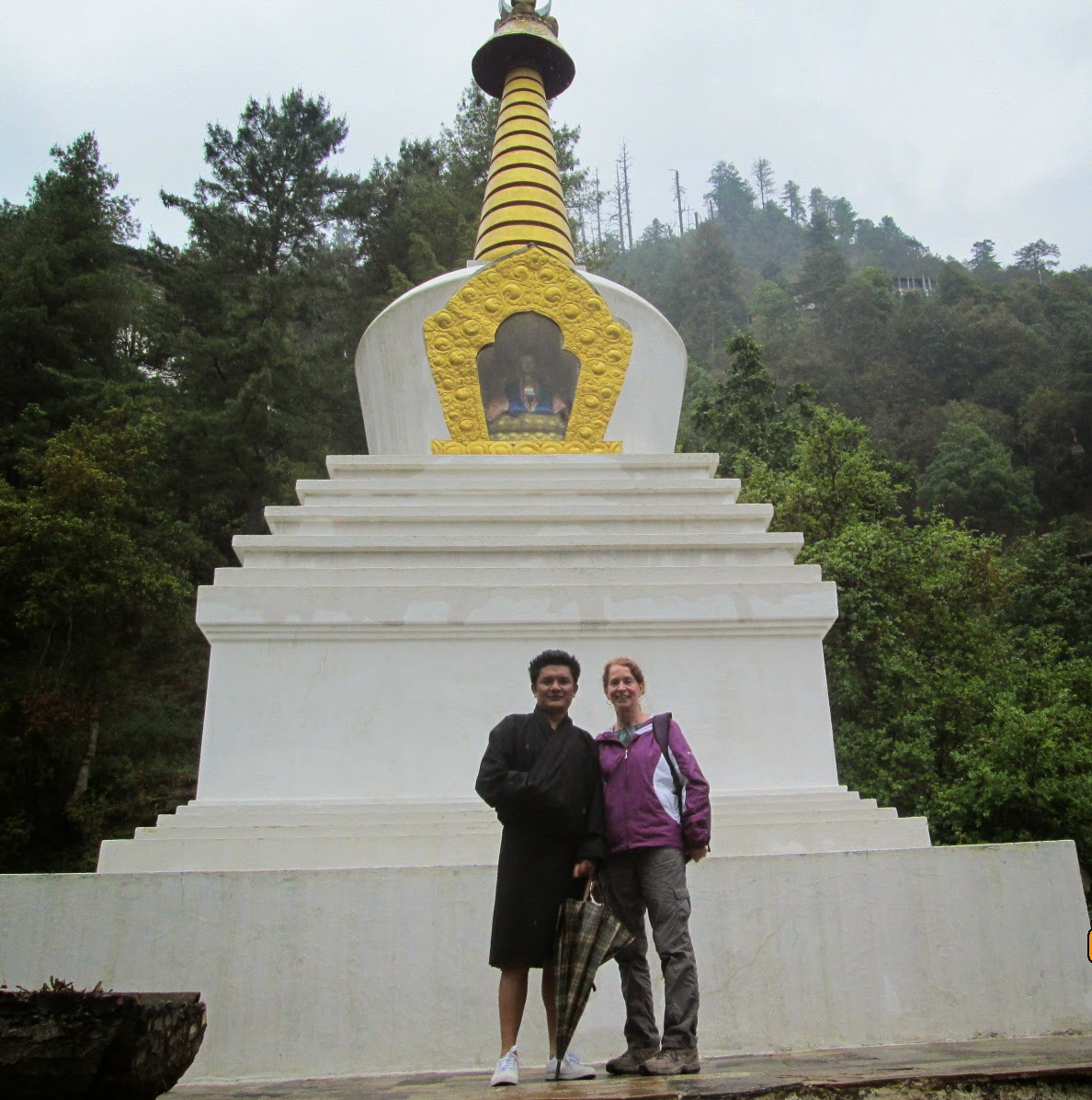Again, this has been quite a week! Instead of heading to the hospital Monday
morning, I went to the Royal Banquet Hall for the opening ceremony of the Partnership
Meeting for uniting two organizations with similar goals, RENEW/Community Based
Support System and the Multi-Sectoral Task Force. Both are projects of the queen-mother Her
Majesty Gyalyum Sangay Choden Wangchuck and focus on social issues including
domestic violence, child welfare, and health concerns. I was seated in the “honored
guest” section right in the front row and listened to addresses from several
government ministers kicking off what was to be a 3-day brainstorming
session. After a photo session and tea service,
I returned to the hospital and then home to prepare for another big day on
Tuesday.
Early the next morning, I was picked up to go to Serbethang,
an inpatient addictions rehab center in a beautiful area high above Thimphu
town. While the location is beautiful,
the facility itself is quite basic and runs on a shoestring budget. I brought them five dozen eggs and a mountain
of treatment materials and information.
I did four groups, two for the men’s program and two for the women’s, a long
day but a very well received, and hopefully helpful, one.
Wednesday, after a busy morning at the hospital, I returned
to the Royal Banquet Hall for the Closing Ceremony. This one was attended by the Queen herself
and had much more formality and rituals, ending once again with a photo session
and high tea. At the tea, I was given an
invitation to attend dinner that evening, hosted by the Queen. To pass the time
between tea and dinner, many of us enjoyed a tour of Tara Zhingkham Lhakhang, a
recently completed temple initiated by the Queen. Nestled amidst a grove of giant cypress trees
overlooking the Pangrizampa monastery, the temple is unique in that it is the
first temple in Bhutan dedicated exclusively to the Tara, one of the few female
Bodhisattvas personifying the transcendental wisdom and active compassion of all
the Buddhas. It features twenty-one Tara clay statues sculpted by prominent
Bhutanese artisans, and the inner temple walls are adorned by exquisite murals
painted by master artists depicting the great deities, saints and protectors
and events from Gautama Buddha’s life. The ceiling of the temple is also
beautifully embellished with mandalas of the Dhyani Buddhas. It is one of the most beautiful temples I
have visited.
Dinner was an event I will always remember. There were musicians, dancers, and singers as
well as a continuous flow of delicious and unusual foods. I had a chance to talk with the Queen herself
as well as long conversations with prominent government officials. The evening concluded with a traditional
circle dance in which we all joined in. The
next morning, one of the hospital nurses told me she saw me on TV that
evening. What a day it was!



























































